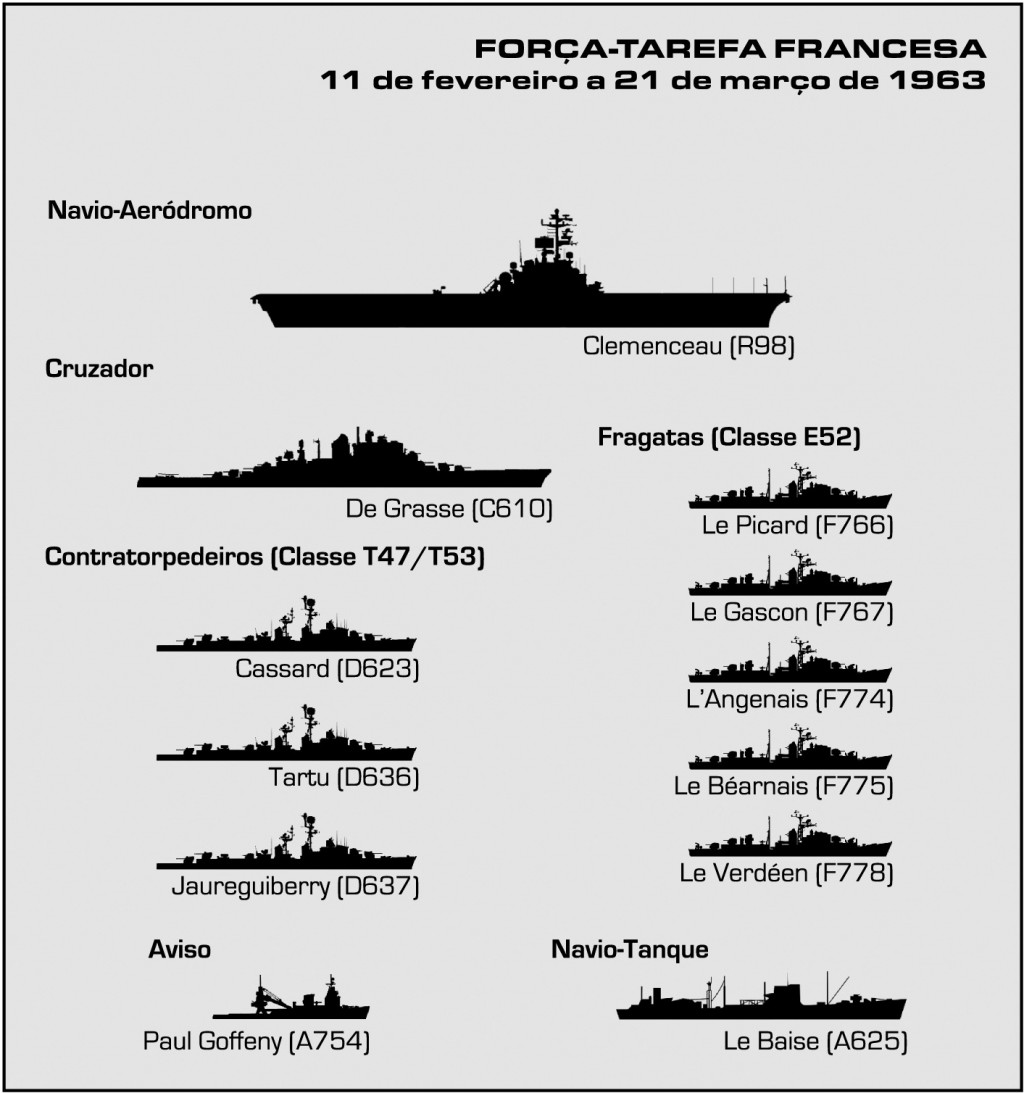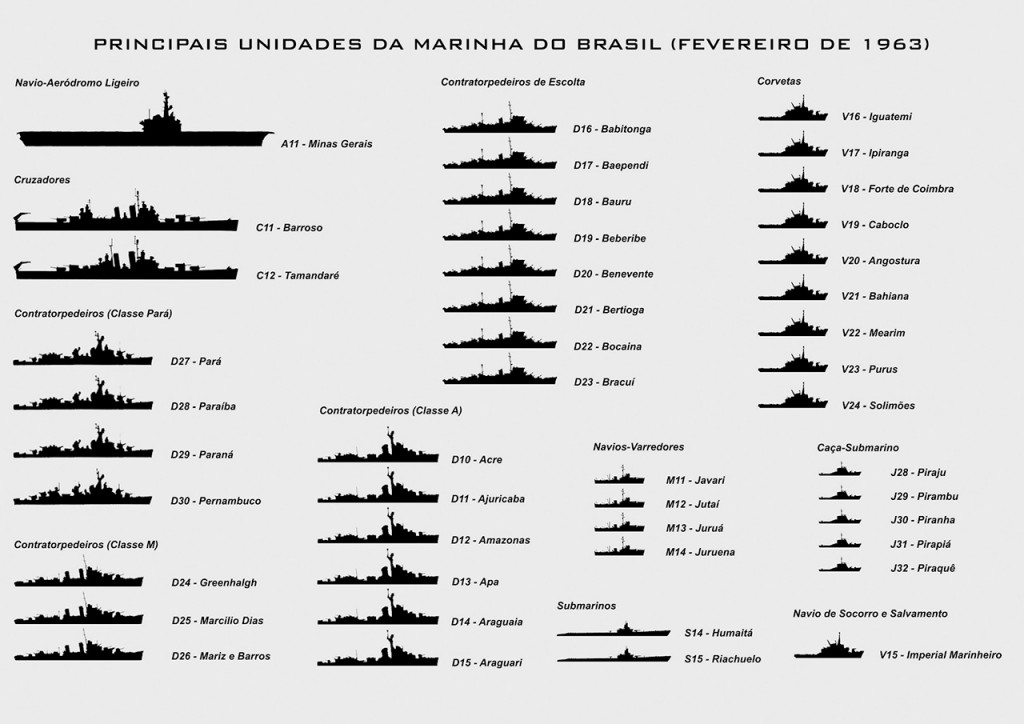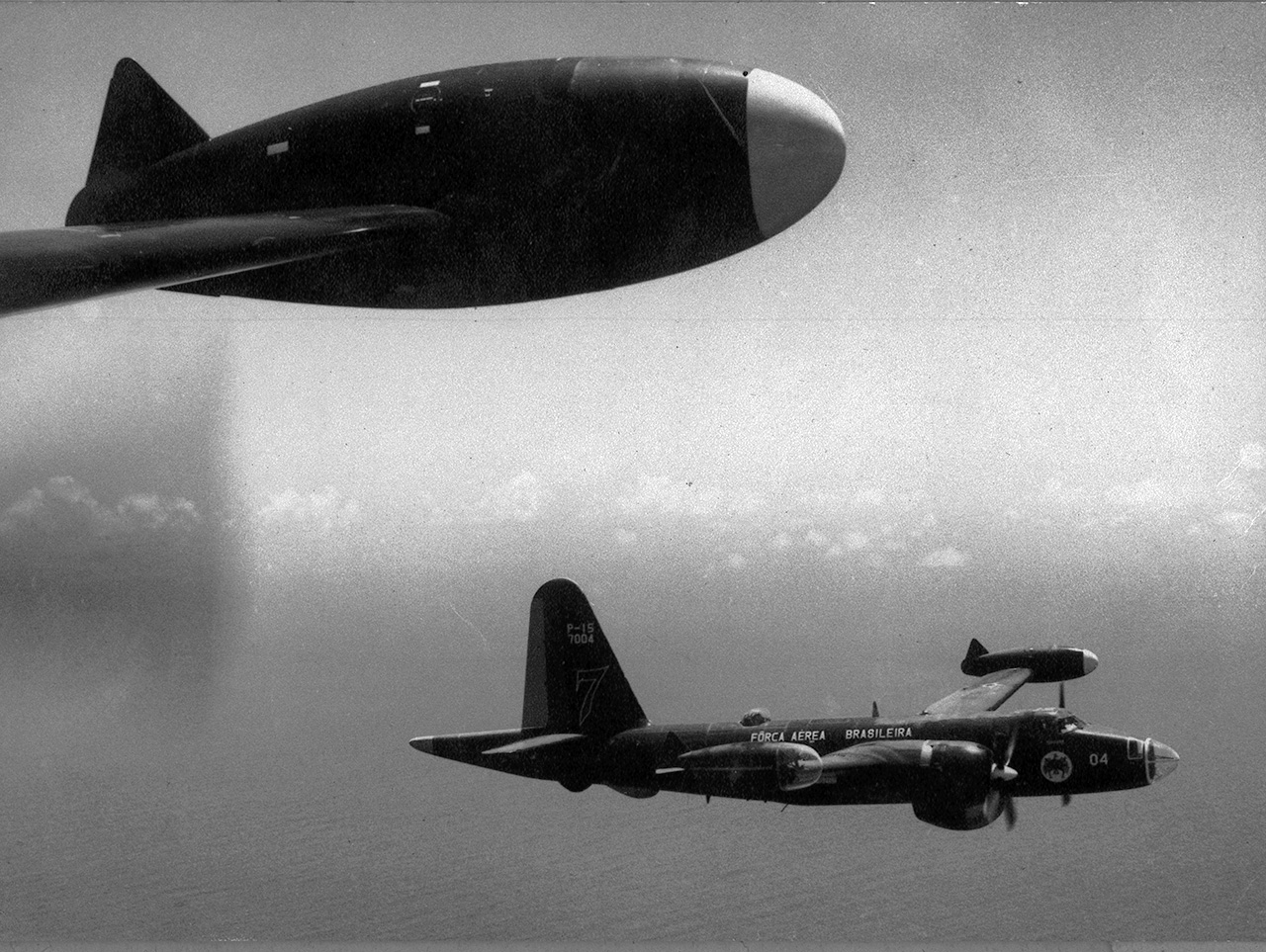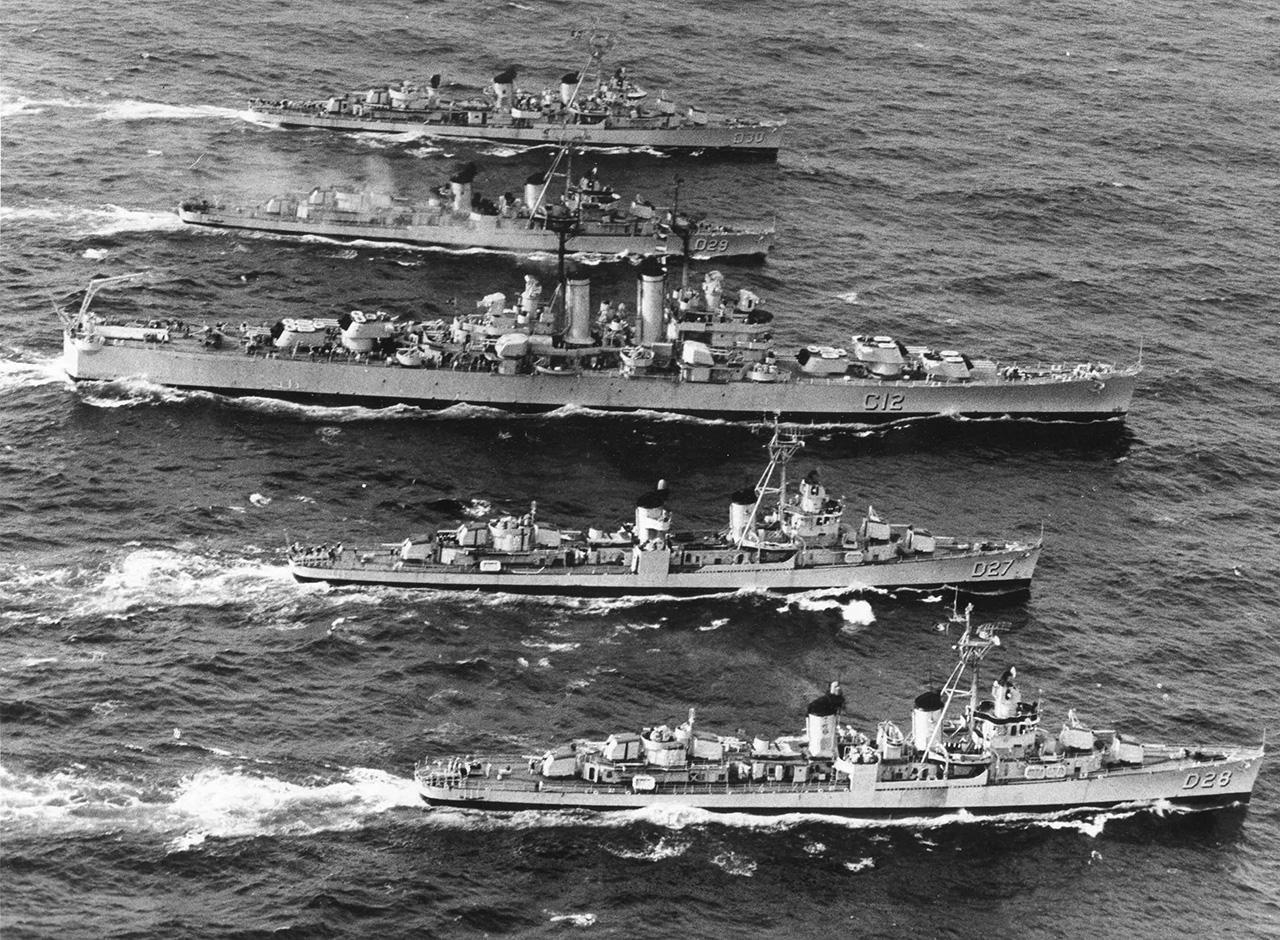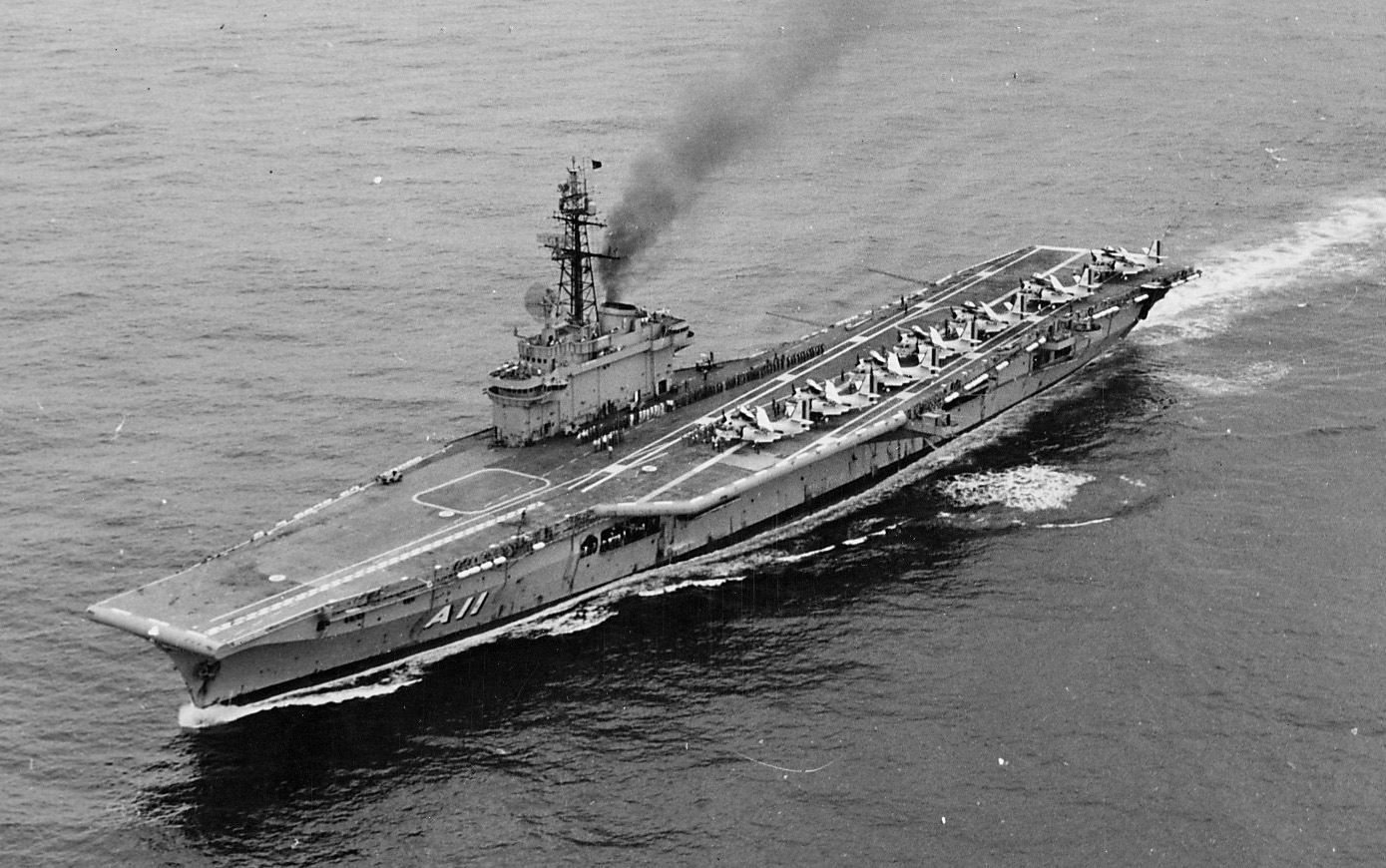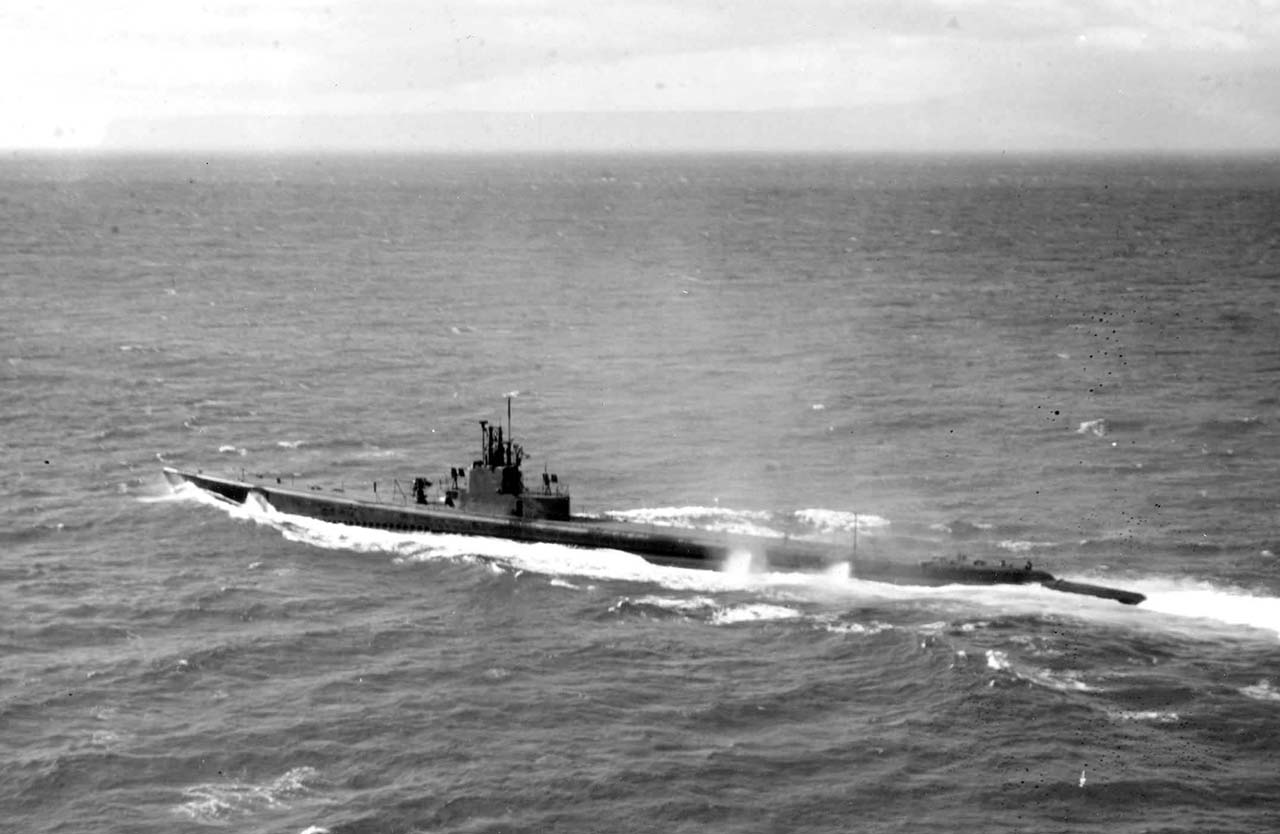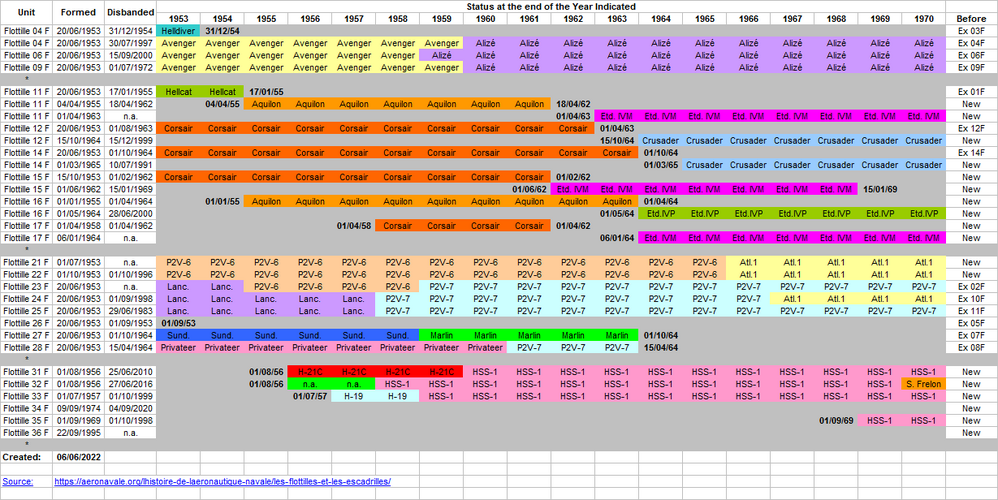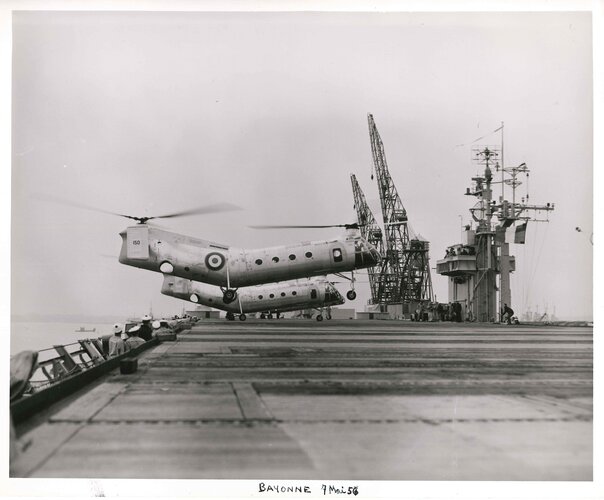You are mixing up two different things here; the 1965 law transferred all fixed-wing aircraft in the Navy to the Air Force. The decision I'm mentioning was that Minas Gerais' air wing(which would be owned by the Navy and under the Navy's operational command) would be an ASW one. In effect, the air wing would have been the same as in reality, but it would entirely fly the green-yellow-blue roundel of the Navy, instead of a combination of Navy roundel(helicopters) and the Air Force star(S-2 Trackers).IIRC, the Brazilian Navy gave up on having attack jets aboard the future NAeL Minas Gerais by early 1959, choosing to concentrate on an ASW wing.What type of jet could it have used ? The Skyhawk seems to be the best solution. But maybe also Panther or Cougar (like Argentina).
In any case, this presents the problem in a different light, as the USSR is unable to supply carrier-born jets quickly.Not exactly, they were obliged to do so in 1965.
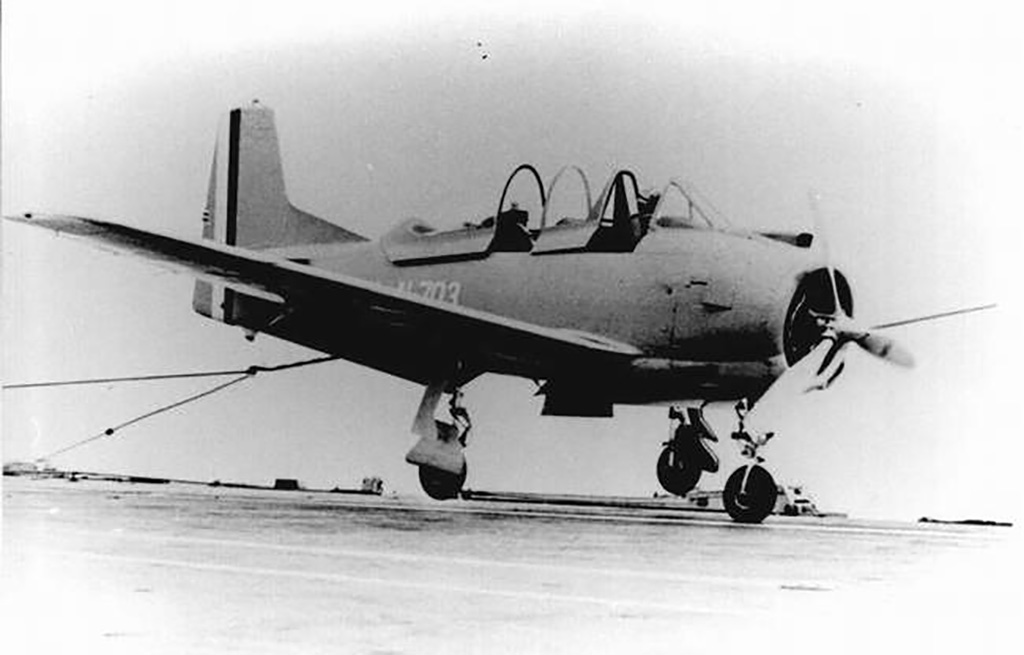
O renascimento da Aviação Naval Brasileira - Poder Naval
A Marinha nunca se conformou com o fato de ter perdido o direito de operar suas próprias aeronaves com a criação do Ministério da Aeronáutica em 1941.www.naval.com.br
You are using an out of date browser. It may not display this or other websites correctly.
You should upgrade or use an alternative browser.
You should upgrade or use an alternative browser.
The best way to properly prepare Brazil militarily for an actual Lobster War Against France In Late 1964?
- Thread starter TheRejectionist
- Start date
F.L.
ACCESS: Top Secret
Wasn't the aim to operate some fighters, like on the HMAS Melbourne ?You are mixing up two different things here; the 1965 law transferred all fixed-wing aircraft in the Navy to the Air Force. The decision I'm mentioning was that Minas Gerais' air wing(which would be owned by the Navy and under the Navy's operational command) would be an ASW one. In effect, the air wing would have been the same as in reality, but it would entirely fly the green-yellow-blue roundel of the Navy, instead of a combination of Navy roundel(helicopters) and the Air Force star(S-2 Trackers).IIRC, the Brazilian Navy gave up on having attack jets aboard the future NAeL Minas Gerais by early 1959, choosing to concentrate on an ASW wing.What type of jet could it have used ? The Skyhawk seems to be the best solution. But maybe also Panther or Cougar (like Argentina).
In any case, this presents the problem in a different light, as the USSR is unable to supply carrier-born jets quickly.Not exactly, they were obliged to do so in 1965.

O renascimento da Aviação Naval Brasileira - Poder Naval
A Marinha nunca se conformou com o fato de ter perdido o direito de operar suas próprias aeronaves com a criação do Ministério da Aeronáutica em 1941.www.naval.com.br
Why, then, would they buy T-28 Trojans ?
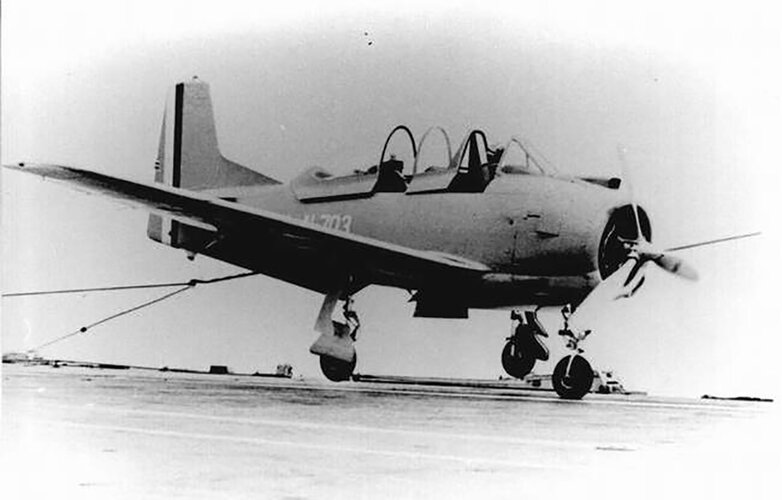
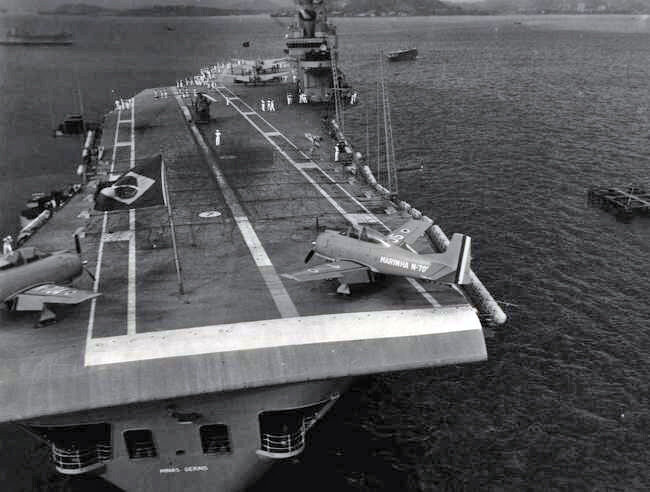
T-28-R1 : This was a military trainer with tandem cockpits, dual instrumentation and flying controls, and hydraulically-actuated rearward-sliding canopy. Six supplied to the Brazilian Navy in the latter part of 1962 were equipped as carrier trainers with arrester hook, systems and controls meeting all requirements for naval training operations. They were used aboard the carrier Minas Gerais, serialed N-701 to N-706. Eventually they were transferred to the Brazilian AF, and re-serialed 0860 to 0865, they were used by the naval co-operation unit 2a ELO at São Pedro da Aldeia.
What's more, the aim of this thread is to think about an alternative history.
To be better prepared for a confrontation with France, Brazil would have needed to operate fighters from its aircraft carrier.
Perhaps this conflict could have been the catalyst needed for the FAB to let the Navy use jets.
Last edited:
For carrier qualification training, I suppose. The Pilatus P-3s they bought for elementary/basic training couldn't do that. My suspicion is the Navy had bigger ambitions regarding carrier aviation as well, but I haven't ever seen anything that could support this.Wasn't the aim to operate some fighters, like on the HMAS Melbourne ?You are mixing up two different things here; the 1965 law transferred all fixed-wing aircraft in the Navy to the Air Force. The decision I'm mentioning was that Minas Gerais' air wing(which would be owned by the Navy and under the Navy's operational command) would be an ASW one. In effect, the air wing would have been the same as in reality, but it would entirely fly the green-yellow-blue roundel of the Navy, instead of a combination of Navy roundel(helicopters) and the Air Force star(S-2 Trackers).IIRC, the Brazilian Navy gave up on having attack jets aboard the future NAeL Minas Gerais by early 1959, choosing to concentrate on an ASW wing.What type of jet could it have used ? The Skyhawk seems to be the best solution. But maybe also Panther or Cougar (like Argentina).
In any case, this presents the problem in a different light, as the USSR is unable to supply carrier-born jets quickly.Not exactly, they were obliged to do so in 1965.

O renascimento da Aviação Naval Brasileira - Poder Naval
A Marinha nunca se conformou com o fato de ter perdido o direito de operar suas próprias aeronaves com a criação do Ministério da Aeronáutica em 1941.www.naval.com.br
Why, then, would they buy T-28 Trojans ?
NOMISYRRUC
ACCESS: Top Secret
- Joined
- 28 September 2008
- Messages
- 2,345
- Reaction score
- 3,800
Re the discussion on the Skyhawk.
The table of equipment for the FAB in Norman Polmar's "World Combat Aircraft Directory" (which was published in 1975) includes 15 A-4F Skyhawks and a footnote says that they were carrier-based aircraft.
However, Brazil didn't buy any Skyhawks until 1997 when they purchased 23 from Kuwait.
Is this a typo? Or is this a contract for Skyhawks that was cancelled after the book went to press?
The table of equipment for the FAB in Norman Polmar's "World Combat Aircraft Directory" (which was published in 1975) includes 15 A-4F Skyhawks and a footnote says that they were carrier-based aircraft.
However, Brazil didn't buy any Skyhawks until 1997 when they purchased 23 from Kuwait.
Is this a typo? Or is this a contract for Skyhawks that was cancelled after the book went to press?
I've read that the Brazilian Air Force considered buying A-4 Skyhawks(from Israel) for carrier operations in the late-70s... let me see if I can find the article.Re the discussion on the Skyhawk.
The table of equipment for the FAB in Norman Polmar's "World Combat Aircraft Directory" (which was published in 1975) includes 15 A-4F Skyhawks and a footnote says that they were carrier-based aircraft.
However, Brazil didn't buy any Skyhawks until 1997 when they purchased 23 from Kuwait.
Is this a typo? Or is this a contract for Skyhawks that was cancelled after the book went to press?
- Joined
- 27 September 2006
- Messages
- 6,418
- Reaction score
- 6,827
Looks like the UK would not have wanted to wade in.
1635yankee
Recovering aeronautical engineer
- Joined
- 18 August 2020
- Messages
- 555
- Reaction score
- 767
I think the best fighter option would be the F11F Tiger. One upgrade that could be considered would be to replace the J-65 engine with an afterburning version of the J-52, which would offer a somewhat lower sfc and similar or greater dry thrust. Yes, I know many people love the J-79, but do note that the F-104 had a significantly higher loss rate due to engine failures than did contemporary J-57 or J-75 powered aircraft. This could be a problem with a single-engined carrier fighter; it was enough of a problem with a single-engined land-based fighter. While the F8U was, in many ways, a better aircraft, it also had quite a high attrition rate. I think that 18 F11F would be a reasonable air group, with a total of about 36 aircraft bought for the navy. It would be useful to buy the same aircraft for the FAB.
I would add the E-1 to the mix.
How many sorties could Minas Gerais support with an aircraft in the F11F class (it would be fewer with the F8U)?
----------
The only non-US carrier aircraft options are French (the Etendard IV) and British (Sea Vixen, Scimitar). Other aircraft I omitting include the Sea Venom, Sea Hawk, F9F Cougar & Panther, F2H Phantom, F3H Demon, F4H Phantom II, the F4D Skyray, and the various flavors of FJ Fury, although I think one could make a reasonable argument for the F9F Cougar.
I would add the E-1 to the mix.
How many sorties could Minas Gerais support with an aircraft in the F11F class (it would be fewer with the F8U)?
----------
The only non-US carrier aircraft options are French (the Etendard IV) and British (Sea Vixen, Scimitar). Other aircraft I omitting include the Sea Venom, Sea Hawk, F9F Cougar & Panther, F2H Phantom, F3H Demon, F4H Phantom II, the F4D Skyray, and the various flavors of FJ Fury, although I think one could make a reasonable argument for the F9F Cougar.
F.L.
ACCESS: Top Secret
Thinking back to the possibility of a France/Brazil confrontation in 1964, I got a few ideas :
- It is highly unlikely that the Armée de l'Air would be able to deploy fighter jets against Brazil. At the time, I don't think there was a base in the region capable of operating Mirage IIIs or Mystère.
- So it's very likely that an aircraft carrier will be deployed. Either the Foch or the Clemenceau (At the time, the Arromanches had almost no air wing left, with a few Corsairs). As for their air wing, there's only one possibility: the Étendard IVM in service since 1962. The Aquilons were in 1964 just retired from service and the Corsairs were doing their last flight.
So there's no need for the FAB to have supersonic fighters. Hunters, F-86s and CL-13s could do the job. And, a little less likely but realistic, F9F Cougars for the Brazilian Navy.
How would the Etendard have managed against these fighters ?
- It is highly unlikely that the Armée de l'Air would be able to deploy fighter jets against Brazil. At the time, I don't think there was a base in the region capable of operating Mirage IIIs or Mystère.
- So it's very likely that an aircraft carrier will be deployed. Either the Foch or the Clemenceau (At the time, the Arromanches had almost no air wing left, with a few Corsairs). As for their air wing, there's only one possibility: the Étendard IVM in service since 1962. The Aquilons were in 1964 just retired from service and the Corsairs were doing their last flight.
So there's no need for the FAB to have supersonic fighters. Hunters, F-86s and CL-13s could do the job. And, a little less likely but realistic, F9F Cougars for the Brazilian Navy.
How would the Etendard have managed against these fighters ?
1635yankee
Recovering aeronautical engineer
- Joined
- 18 August 2020
- Messages
- 555
- Reaction score
- 767
There is are several airports in French Guiana, some of which could certainly accommodate French combat and support aircraft. The one at Cayenne has a 3200 m runway[1] but otherwise limited facilities. There is also an ongoing problem with illegal miners coming over from Brazil, which could be a trigger for a new conflict.
French Guiana is quite underdeveloped, so it can't be relied on for much beyond runways, water, and maybe food.
French Guiana is quite underdeveloped, so it can't be relied on for much beyond runways, water, and maybe food.
F.L.
ACCESS: Top Secret
In 1964 ?Cayenne has a 3200 m runway[1]
Not sure, but that airport had a peculiar story in WWII. It was used as a starting point to ferry US aircraft to North Africa and from there, to combat in the Mediterranean.
So the infrastructure must have been decent, WWII US quality was nothing to sneeze at.
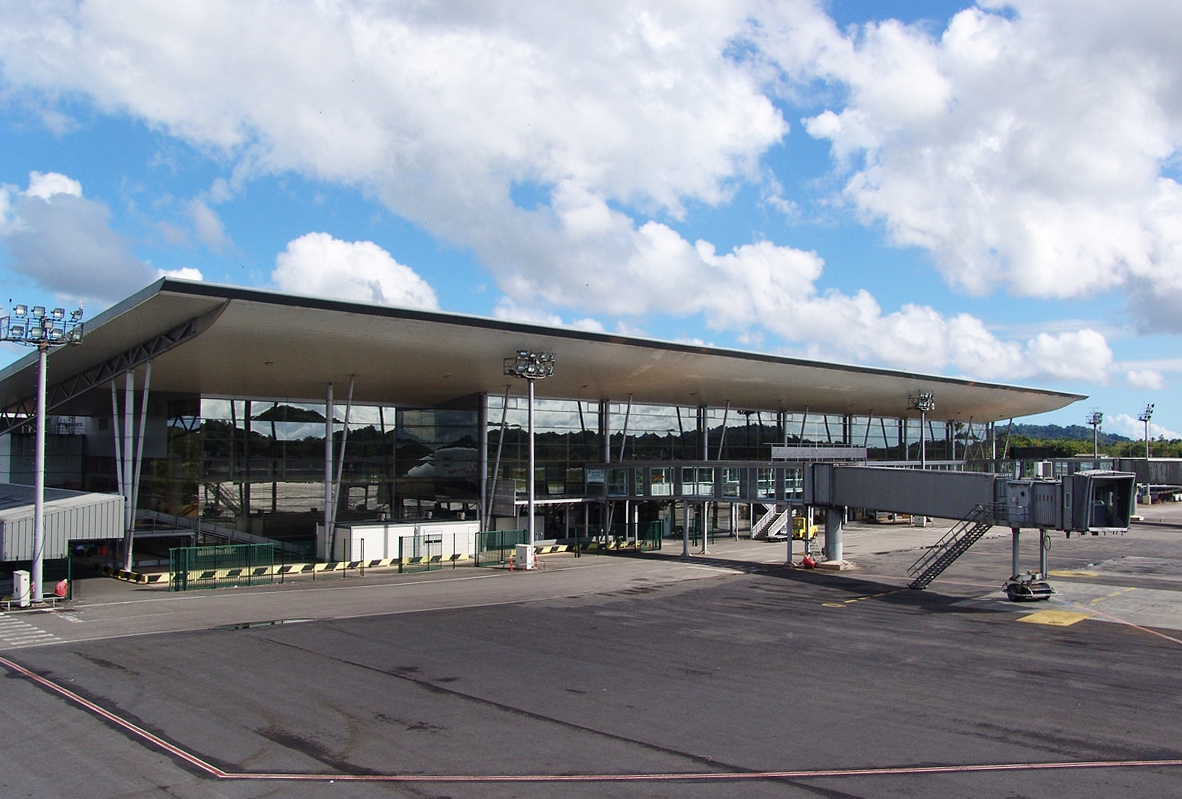
 en.wikipedia.org
en.wikipedia.org

 fr.wikipedia.org
fr.wikipedia.org
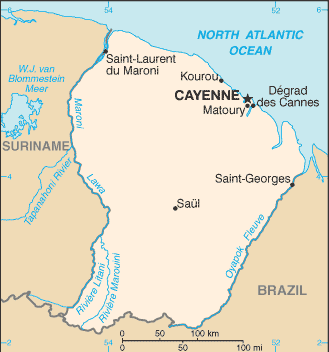
 fr.wikipedia.org
fr.wikipedia.org
So the infrastructure must have been decent, WWII US quality was nothing to sneeze at.

Cayenne – Félix Eboué Airport - Wikipedia

Aéroport de Cayenne Félix-Éboué — Wikipédia

Liste des aérodromes en Guyane — Wikipédia
carvalho2008
Naval alternative projects
- Joined
- 20 November 2015
- Messages
- 452
- Reaction score
- 500
I've read that the Brazilian Air Force considered buying A-4 Skyhawks(from Israel) for carrier operations in the late-70s... let me see if I can find the article.Re the discussion on the Skyhawk.
The table of equipment for the FAB in Norman Polmar's "World Combat Aircraft Directory" (which was published in 1975) includes 15 A-4F Skyhawks and a footnote says that they were carrier-based aircraft.
However, Brazil didn't buy any Skyhawks until 1997 when they purchased 23 from Kuwait.
Is this a typo? Or is this a contract for Skyhawks that was cancelled after the book went to press?
From memory: didn't Brazil had the same idiotic law as Italy, the Air Force forbidding the Navy from buying fast jets ? And that was undone when they bought the Foch, second hand in 2000 ?
Thinking back to the possibility of a France/Brazil confrontation in 1964, I got a few ideas :
- It is highly unlikely that the Armée de l'Air would be able to deploy fighter jets against Brazil. At the time, I don't think there was a base in the region capable of operating Mirage IIIs or Mystère.
- So it's very likely that an aircraft carrier will be deployed. Either the Foch or the Clemenceau (At the time, the Arromanches had almost no air wing left, with a few Corsairs). As for their air wing, there's only one possibility: the Étendard IVM in service since 1962. The Aquilons were in 1964 just retired from service and the Corsairs were doing their last flight.
So there's no need for the FAB to have supersonic fighters. Hunters, F-86s and CL-13s could do the job. And, a little less likely but realistic, F9F Cougars for the Brazilian Navy.
How would the Etendard have managed against these fighters ?
The AdA would not seat out of this whirling their thumbs. While the bulk of the Mirages (and older tactical types) couldn't be refueled out of the new C-135FR, F-100s could, from day one.
Plus the AdA can send aircraft via Martinique and Guadeloupe, by boat if needed. In fact I think they would send tactical fighters in small hops: Brittany - UK - Ireland - Thulé - Saint Pierre & Miquelon - Canada - USA - Martinique / Guadeloupe. Would be a veeeeeeeery long trip for sure.
Tactical fighters could be packaged in boats: in 1973 & 1974 one Mirage IIIE and one Jaguar went to Moruroa to drop a tac nuke, unlike the Mirage IVA in 1966, same place, they travelled the 20 000 km by boat.
1635yankee
Recovering aeronautical engineer
- Joined
- 18 August 2020
- Messages
- 555
- Reaction score
- 767
Don't know.In 1964 ?Cayenne has a 3200 m runway[1]
- Joined
- 27 September 2006
- Messages
- 6,418
- Reaction score
- 6,827
The naval side of the confrontation is worth looking at.
Brasil operated two former US Navy light cruisers.
France had a two light cruisers and a number of destroyers.
One of the cruisers (De Grasse) was undergoing conversion to be flagship for nuclear tests in the Pacific.
Both navies had conventional submarines.
Unlike the Falklands in 1982 this would not have been a missile war. The French Navy were converting four destroyers to carry Tartar Sam systems.
Brasil operated two former US Navy light cruisers.
France had a two light cruisers and a number of destroyers.
One of the cruisers (De Grasse) was undergoing conversion to be flagship for nuclear tests in the Pacific.
Both navies had conventional submarines.
Unlike the Falklands in 1982 this would not have been a missile war. The French Navy were converting four destroyers to carry Tartar Sam systems.
Last edited:
Not only jets; it reserved operation of military fixed-wing aircraft as sole province of the Air Force. It was revoked in 1997, when Brazil bought the Foch.I've read that the Brazilian Air Force considered buying A-4 Skyhawks(from Israel) for carrier operations in the late-70s... let me see if I can find the article.Re the discussion on the Skyhawk.
The table of equipment for the FAB in Norman Polmar's "World Combat Aircraft Directory" (which was published in 1975) includes 15 A-4F Skyhawks and a footnote says that they were carrier-based aircraft.
However, Brazil didn't buy any Skyhawks until 1997 when they purchased 23 from Kuwait.
Is this a typo? Or is this a contract for Skyhawks that was cancelled after the book went to press?
From memory: didn't Brazil had the same idiotic law as Italy, the Air Force forbidding the Navy from buying fast jets ? And that was undone when they bought the Foch, second hand in 2000 ?
1635yankee
Recovering aeronautical engineer
- Joined
- 18 August 2020
- Messages
- 555
- Reaction score
- 767
One issue is the general training of the Brazilian military. What was that like in the early 1960s? Since this was about when the military dictatorship took over, I'd suspect that much of their military and police services were more concerned in getting rid of domestic risks to their rule.
In other words, a lot of soldiers, sailors, and airmen would be pulled away from combat training and equipment maintenance to arrest, torture, and kill "enemies of the state."
In other words, a lot of soldiers, sailors, and airmen would be pulled away from combat training and equipment maintenance to arrest, torture, and kill "enemies of the state."
carvalho2008
Naval alternative projects
- Joined
- 20 November 2015
- Messages
- 452
- Reaction score
- 500
carvalho2008
Naval alternative projects
- Joined
- 20 November 2015
- Messages
- 452
- Reaction score
- 500
BlackBat242
OK, I changed my personal text ;)
- Joined
- 10 April 2013
- Messages
- 1,482
- Reaction score
- 4,306
Don't forget the French carrier Arromanches.
The former HMS Colossus, in 1957–58 Arromanches was reconstructed with a four-degree angled flight deck, a mirror landing sight and with other modifications for anti-submarine warfare, including operation of Breguet Alizé ASW aircraft. She was also equipped for training operations.
She was in the Far East in 1964... but certainly could hurry back to provide ASW cover for the French task force.
1966:



The former HMS Colossus, in 1957–58 Arromanches was reconstructed with a four-degree angled flight deck, a mirror landing sight and with other modifications for anti-submarine warfare, including operation of Breguet Alizé ASW aircraft. She was also equipped for training operations.
She was in the Far East in 1964... but certainly could hurry back to provide ASW cover for the French task force.
1966:
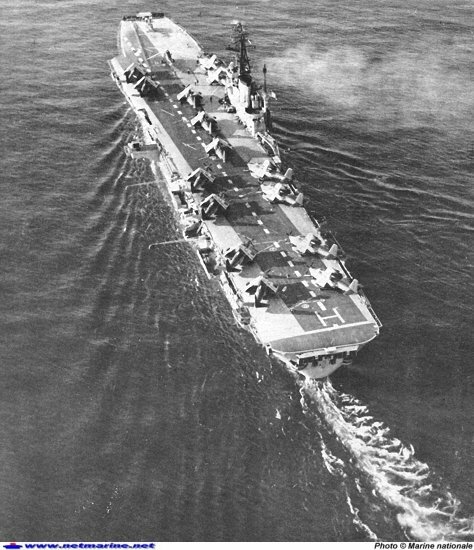
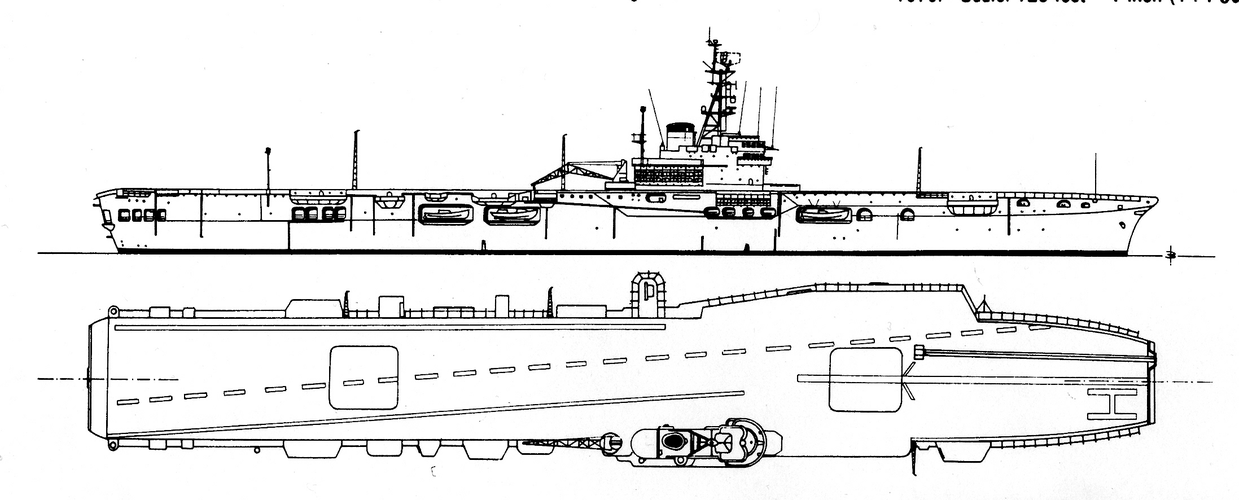
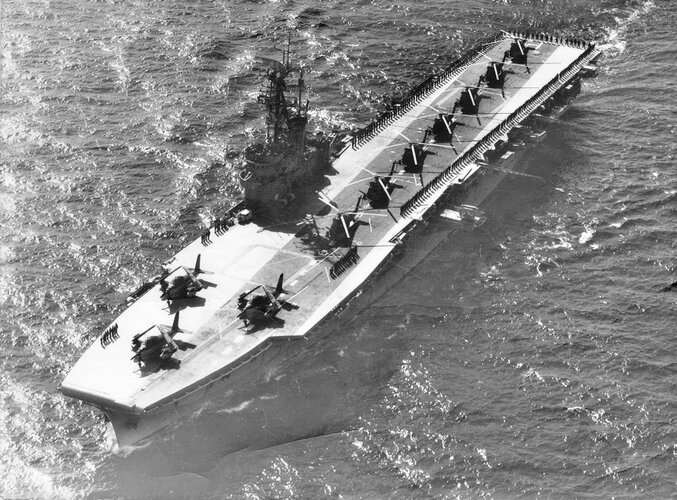
Last edited:
F.L.
ACCESS: Top Secret
This image is misleading, because it does not show certain French ships: notably the Foch, the Arromanches, and I believe some others.
Last edited:
Somebody mentionned Minas Gerais ? and Arromanches ? fun fact: they were sisterships, from the Colossus class (less capable than Majestics). France, UK, The Netherlands; Brazil and Argentina; Canada, Australia, India... they were seemingly everywhere. The little carriers that could.
Arromanches entered its last decade in 1964, Foch and Clemenceau IOC gave it new roles as "the French Navy Swiss knife carrier".
- Training, with Fouga Zephyr: naval Magisters.
- ASW, with Breguet Alizés and helicopters
- LPH / Commando carrier, with moar helicopters
- Disaster / rescue / hospital ship
Arromanches could essentially handle every single flying machine of the French Navy minus (obviously) Etendards and Crusaders. Aquilons and Corsairs by 1963 were near the end of their useful lives, but still there if the need arose.
Even more interesting: Skyraiders ! France had a number of them, but NOT for naval strike: rather, for COIN in Algeria... with the Armée de l'Air.
No idea if the tailhook had been removed, but otherwise it would be fun to have Skyraiders on Arromanches, with Aquilons and Corsairs and Alizés. Talk about a diverse air group !
By March 1963 the Aéronavale was near the end of a major transition between obsolete aircraft on obsolete ships (Lafayette, Arromanches, Aquilons, Corsairs) and brand new carriers and aircraft: Foch, Clemenceau, Etendards, Crusaders.
IF somebody is interested, I could throw an ODB of carriers and aircrafts by February 1, 1963. Not sure where was Lafayette and its Corsairs, nor the Aquilons: I'll check.
Arromanches entered its last decade in 1964, Foch and Clemenceau IOC gave it new roles as "the French Navy Swiss knife carrier".
- Training, with Fouga Zephyr: naval Magisters.
- ASW, with Breguet Alizés and helicopters
- LPH / Commando carrier, with moar helicopters
- Disaster / rescue / hospital ship
Arromanches could essentially handle every single flying machine of the French Navy minus (obviously) Etendards and Crusaders. Aquilons and Corsairs by 1963 were near the end of their useful lives, but still there if the need arose.
Even more interesting: Skyraiders ! France had a number of them, but NOT for naval strike: rather, for COIN in Algeria... with the Armée de l'Air.
No idea if the tailhook had been removed, but otherwise it would be fun to have Skyraiders on Arromanches, with Aquilons and Corsairs and Alizés. Talk about a diverse air group !
By March 1963 the Aéronavale was near the end of a major transition between obsolete aircraft on obsolete ships (Lafayette, Arromanches, Aquilons, Corsairs) and brand new carriers and aircraft: Foch, Clemenceau, Etendards, Crusaders.
IF somebody is interested, I could throw an ODB of carriers and aircrafts by February 1, 1963. Not sure where was Lafayette and its Corsairs, nor the Aquilons: I'll check.
Let's go...
-Clemenceau: ok
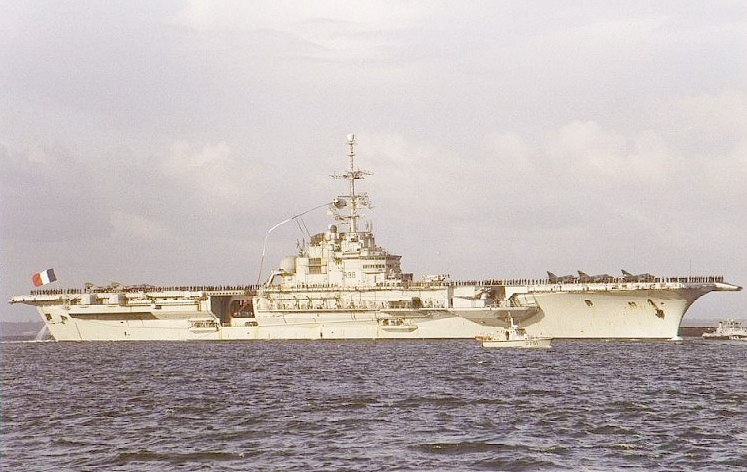
 en.wikipedia.org
en.wikipedia.org
-Arromanches: ok
-Foch: not so ok
https://en.wikipedia.org/wiki/French_aircraft_carrier_Foch Commissioned: July 15, 1963. Ooops, a bit too late !
-Lafayette: March 20, 1963
The aircraft:
-Etendard IV is entering service http://www.netmarine.net/aero/aeronefs/etend4p/histoire.htm
les flottilles 15F, 11F, 17F et 16F
-15F Elle est dissoute le 1er février 1962 pour être reformée en juin sur Etendard IVM
-11F Est reconstituée en avril 1963 sur Etendard IVM
-----------------------------------
-12F, Crusader: not there yet ! Elle vole sur Vought Corsair jusqu'au 1er août 1963, étant basée à Hyères puis à Karouba (Tunisie).
------------------------------------
-17F Dissoute en 1962, elle totalisait alors 14 000 heures de vol sur Corsair. Elle a été reconstituée le 6 juin 1964 à Hyères avec des Etendard IVM.
-Aquilons were badly worn out and were grounded by 09/1963. Plus they couldn't use Arromanches, so not useful.
-This leaves Arromanches (and Lafayette eventually) with F4U-7 Corsairs. Not a very good idea.
-Clemenceau: ok

Clemenceau-class aircraft carrier - Wikipedia
-Arromanches: ok
-Foch: not so ok
https://en.wikipedia.org/wiki/French_aircraft_carrier_Foch Commissioned: July 15, 1963. Ooops, a bit too late !
-Lafayette: March 20, 1963
The aircraft:
-Etendard IV is entering service http://www.netmarine.net/aero/aeronefs/etend4p/histoire.htm
les flottilles 15F, 11F, 17F et 16F
-15F Elle est dissoute le 1er février 1962 pour être reformée en juin sur Etendard IVM
-11F Est reconstituée en avril 1963 sur Etendard IVM
-----------------------------------
-12F, Crusader: not there yet ! Elle vole sur Vought Corsair jusqu'au 1er août 1963, étant basée à Hyères puis à Karouba (Tunisie).
------------------------------------
-17F Dissoute en 1962, elle totalisait alors 14 000 heures de vol sur Corsair. Elle a été reconstituée le 6 juin 1964 à Hyères avec des Etendard IVM.
-Aquilons were badly worn out and were grounded by 09/1963. Plus they couldn't use Arromanches, so not useful.
-This leaves Arromanches (and Lafayette eventually) with F4U-7 Corsairs. Not a very good idea.
Last edited:
Okay, so it will be
-Clemenceau with 15F and eventually 11F, both on Etendard IVs. Crusaders not there yet, Aquilons and Corsairs are on their last legs, same for Lafayette.
-This leaves Arromanches for ASW with Breguets Alizés.
-Crusaders will miss the fight by 18 months to two years.
-Lafayette could be recalled in extremis and Foch pressed into service, but the harsh reality is: not enough aircraft, or obsolete ones !
-Clemenceau with 15F and eventually 11F, both on Etendard IVs. Crusaders not there yet, Aquilons and Corsairs are on their last legs, same for Lafayette.
-This leaves Arromanches for ASW with Breguets Alizés.
-Crusaders will miss the fight by 18 months to two years.
-Lafayette could be recalled in extremis and Foch pressed into service, but the harsh reality is: not enough aircraft, or obsolete ones !
F.L.
ACCESS: Top Secret
-Aquilons were badly worn out and were grounded by 09/1963. Plus they couldn't use Arromanches, so not useful.
The 16F ceases operations on Aquilon on 01 April 1964.The Aquilon's career as an embarked fighter came to an end in September 1963.
The last official flight of the Aquilon in the Aéronautique Navale took place on 30 June 1966.
F.L.
ACCESS: Top Secret
--- What if story !!! ---
View attachment 702604
In 1964, because of the Lobster War with Brazil, the Arromanches was sent as flagship of the French fleet, with an air wing of Cougars and Alizé. It carries out ASW and fleet defence missions, as well as maritime reconnaissance against Brazilian Navy. Several encounters were made with Brazilian aircraft, including a formation of Meteors on approach to the fleet, which was intercepted by two F9F and diverted. Exceptionally, two CM-175s which had remained on the Arromanches were used for reconnaissance missions with Alizé and escorted by F9F.
carvalho2008
Naval alternative projects
- Joined
- 20 November 2015
- Messages
- 452
- Reaction score
- 500
The French navy was much bigger, I just posted the Task Force of Clemenceau that was close in Africa. The destroyer Tartu belonged to this task force that was undergoing training in Africa and was called to detach and come to Brazil, giving an escalation of a military tone to the conflict.
Esta imagem é enganosa, porque não mostra certos navios franceses: notadamente o Foch, o Arromanches e, creio, alguns outros.
Last edited:
- Joined
- 27 September 2006
- Messages
- 6,418
- Reaction score
- 6,827
You have quite a potential naval action shaping up.
The newly delivered Etendards would not have very sophisticated weapons-cannon and bombs? But they would give France a good edge.
The two Brasilian cruisers could make a difference. Did they have ammo for their big guns? did they practise using them? More likely they were just training ships to look good on Navy days?
Though Britain was unlikely to get involved, too much going on with Indonesia and Aden, a British carrier with Sea Vixens and Scimitars plus HMS Dreadnought, RN first SSN, could sail to Brazil's aid. Doubt it, but we did get a large Brasilian naval order for the Niteroi class frigates later in the decade.
The newly delivered Etendards would not have very sophisticated weapons-cannon and bombs? But they would give France a good edge.
The two Brasilian cruisers could make a difference. Did they have ammo for their big guns? did they practise using them? More likely they were just training ships to look good on Navy days?
Though Britain was unlikely to get involved, too much going on with Indonesia and Aden, a British carrier with Sea Vixens and Scimitars plus HMS Dreadnought, RN first SSN, could sail to Brazil's aid. Doubt it, but we did get a large Brasilian naval order for the Niteroi class frigates later in the decade.
1635yankee
Recovering aeronautical engineer
- Joined
- 18 August 2020
- Messages
- 555
- Reaction score
- 767
I suspect it's more likely for the US to get involved -- especially after the military coup -- than for the UK to do so. Of course, US involvement is most likely to be something like "Hands Off!" to France.
NOMISYRRUC
ACCESS: Top Secret
- Joined
- 28 September 2008
- Messages
- 2,345
- Reaction score
- 3,800
NOMISYRRUC
ACCESS: Top Secret
- Joined
- 28 September 2008
- Messages
- 2,345
- Reaction score
- 3,800
I'm pleased to be of service.As usual - it is !
NOMISYRRUC
ACCESS: Top Secret
- Joined
- 28 September 2008
- Messages
- 2,345
- Reaction score
- 3,800
To paraphrase Hilaire Belloc.
"Whatever happens, France has got, Tanguy & Laverdure, and Brazil has not"
His exact words were.
"Whatever happens, we have got, the Maxim gun, and they have not."
"Whatever happens, France has got, Tanguy & Laverdure, and Brazil has not"
His exact words were.
"Whatever happens, we have got, the Maxim gun, and they have not."
NOMISYRRUC
ACCESS: Top Secret
- Joined
- 28 September 2008
- Messages
- 2,345
- Reaction score
- 3,800
According to its Wikipedia entry Dixmude served as an accommodation ship until 1965. Could she have been brought back into service as a helicopter carrier?Somebody mentionned Minas Gerais ? and Arromanches ? fun fact: they were sisterships, from the Colossus class (less capable than Majestics). France, UK, The Netherlands; Brazil and Argentina; Canada, Australia, India... they were seemingly everywhere. The little carriers that could.
Arromanches entered its last decade in 1964, Foch and Clemenceau IOC gave it new roles as "the French Navy Swiss knife carrier".
- Training, with Fouga Zephyr: naval Magisters.
- ASW, with Breguet Alizés and helicopters
- LPH / Commando carrier, with moar helicopters
- Disaster / rescue / hospital ship
Arromanches could essentially handle every single flying machine of the French Navy minus (obviously) Etendards and Crusaders. Aquilons and Corsairs by 1963 were near the end of their useful lives, but still there if the need arose.
Even more interesting: Skyraiders ! France had a number of them, but NOT for naval strike: rather, for COIN in Algeria... with the Armée de l'Air.
No idea if the tailhook had been removed, but otherwise it would be fun to have Skyraiders on Arromanches, with Aquilons and Corsairs and Alizés. Talk about a diverse air group !
By March 1963 the Aéronavale was near the end of a major transition between obsolete aircraft on obsolete ships (Lafayette, Arromanches, Aquilons, Corsairs) and brand new carriers and aircraft: Foch, Clemenceau, Etendards, Crusaders.
IF somebody is interested, I could throw an ODB of carriers and aircrafts by February 1, 1963. Not sure where was Lafayette and its Corsairs, nor the Aquilons: I'll check.
Richelieu and Jean Bart were accommodation ships in 1964.
F.L.
ACCESS: Top Secret
carvalho2008
Naval alternative projects
- Joined
- 20 November 2015
- Messages
- 452
- Reaction score
- 500
Well, actually, I had previously posted the map of the operational theater of the conflict.
It was a possible coastal-coastal collision. It was not or would be an oceanic battle.
There was no way France could win a littoral war with Brazil, as it meant that planes from the mainland could defeat the French maritime air force. The situation could be reversed, of course, if it was an ocean battle, but it wasn't the case. The fishing contest area was within the 12 mile limits... and the conflict ceased because there was no economic merit to compensate the French for the confrontation.
There is nothing to remember about the Guianas, because at that time, the population density was minimal and the territories were absurdly separated by dense forests, there would be no targets to be projected with an attack from there, except forest....




2.264 km distance
It was a possible coastal-coastal collision. It was not or would be an oceanic battle.
There was no way France could win a littoral war with Brazil, as it meant that planes from the mainland could defeat the French maritime air force. The situation could be reversed, of course, if it was an ocean battle, but it wasn't the case. The fishing contest area was within the 12 mile limits... and the conflict ceased because there was no economic merit to compensate the French for the confrontation.
There is nothing to remember about the Guianas, because at that time, the population density was minimal and the territories were absurdly separated by dense forests, there would be no targets to be projected with an attack from there, except forest....
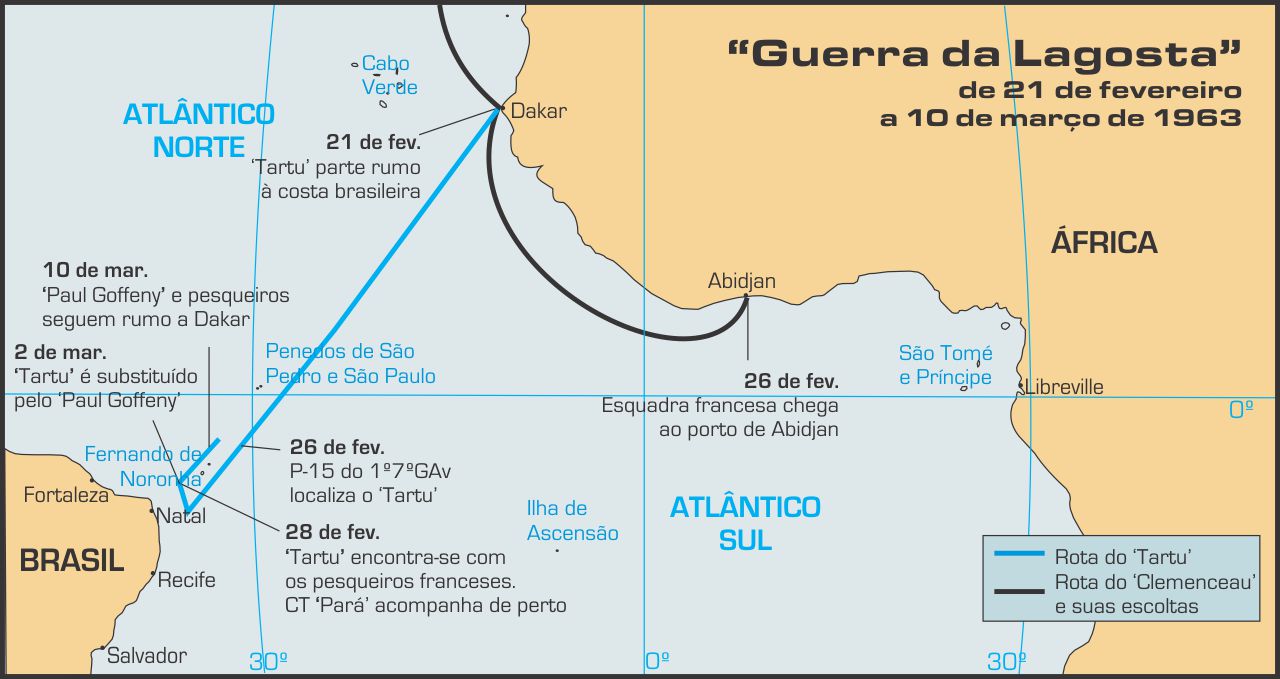
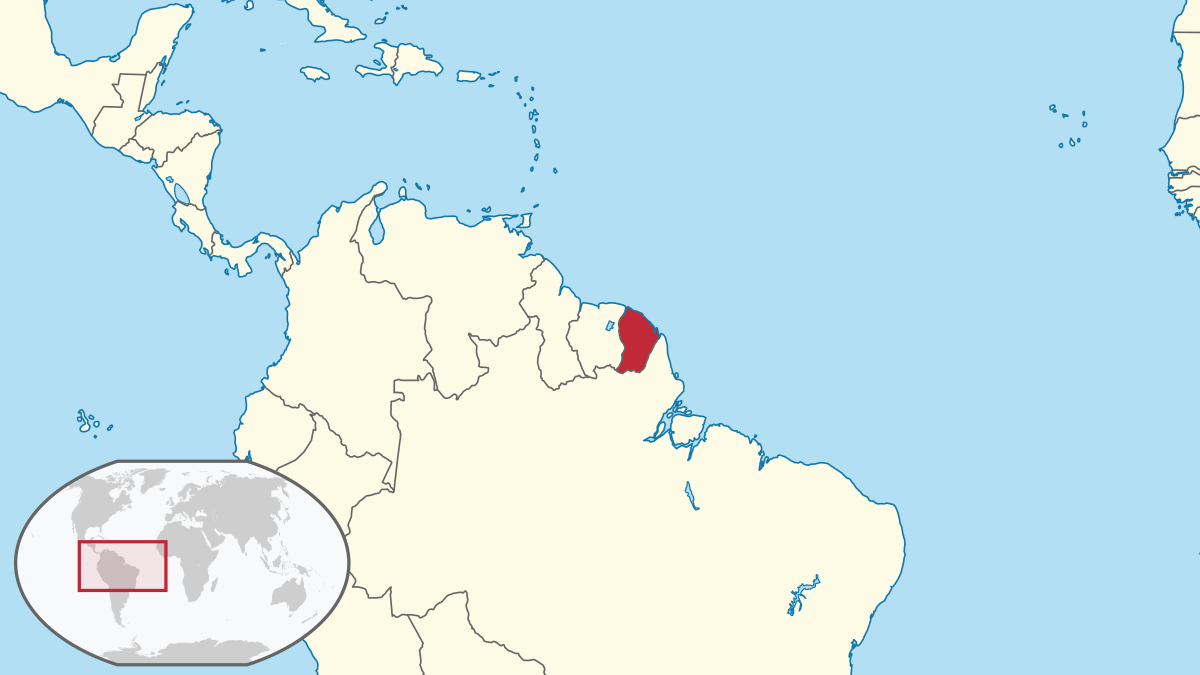
2.264 km distance
Last edited:
carvalho2008
Naval alternative projects
- Joined
- 20 November 2015
- Messages
- 452
- Reaction score
- 500
58 unidades At-33A

60 unidades Gloster Meteor

32 unidades F-80C

64 unidades B-25J

28 unidades B26 Invaders

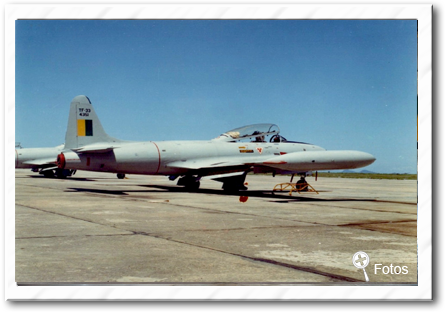
60 unidades Gloster Meteor
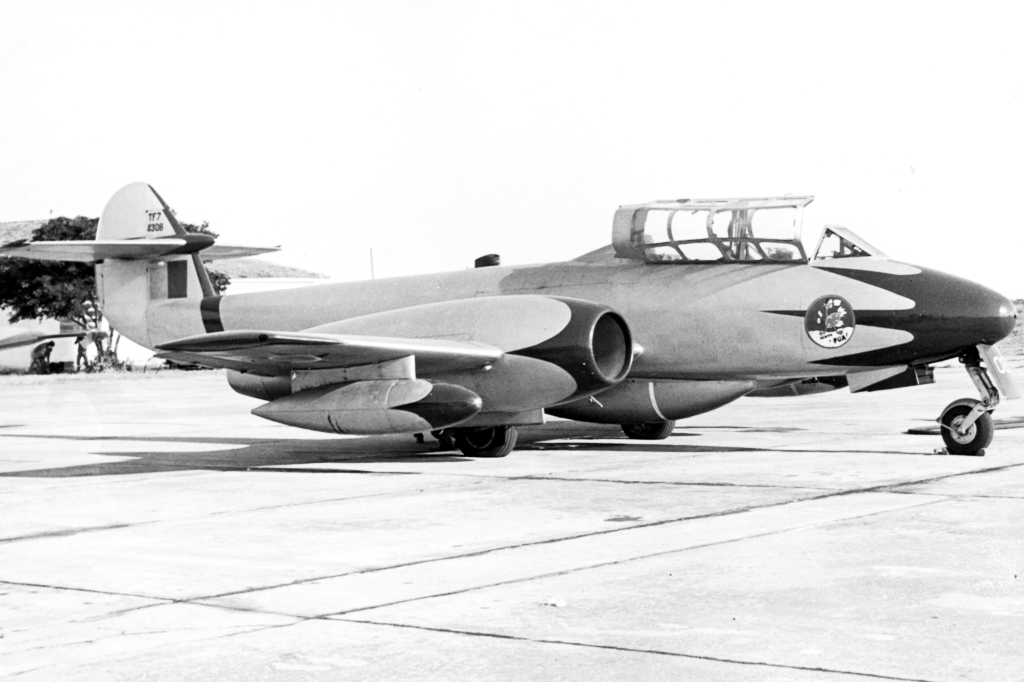
32 unidades F-80C
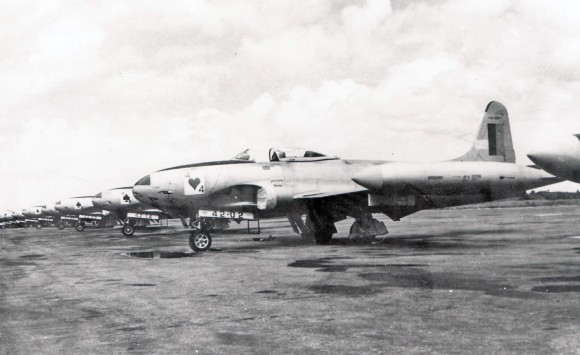
64 unidades B-25J

28 unidades B26 Invaders
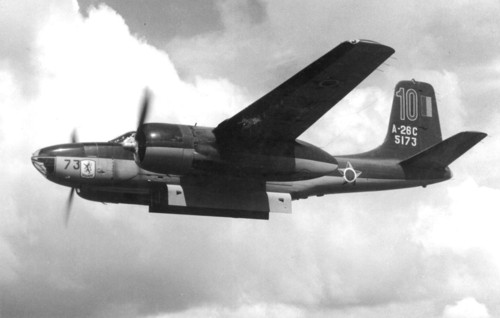
F.L.
ACCESS: Top Secret
Wrong language mate !Bem, na verdade, eu havia postado anteriormente o mapa do teatro operacional do conflito.
Foi uma possível colisão litoral e costeira. Não foi ou seria uma batalha oceânica.
Não havia como a França vencer uma guerra litorânea com o Brasil, pois isso significava que os aviões do continente poderiam derrotar a força aérea marítima francesa. A situação poderia ser invertida, claro, se fosse uma batalha oceânica, mas não foi o caso. A área do concurso de pesca estava dentro dos limites de 12 milhas... e o conflito cessou porque não havia mérito econômico para compensar os franceses pelo confronto.
Não há o que lembrar das Guianas, pois naquela época, a densidade populacional era mínima e os territórios eram absurdamente separados por florestas densas, não haveria alvos a serem projetados com um ataque de lá, a não ser floresta....
carvalho2008
Naval alternative projects
- Joined
- 20 November 2015
- Messages
- 452
- Reaction score
- 500
Wrong language mate !Well, actually, I had previously posted the map of the operational theater of the conflict.
It was a possible coastal-coastal collision. It was not or would be an oceanic battle.
There was no way France could win a littoral war with Brazil, as it meant that planes from the mainland could defeat the French maritime air force. The situation could be reversed, of course, if it was an ocean battle, but it wasn't the case. The fishing contest area was within the 12 mile limits... and the conflict ceased because there was no economic merit to compensate the French for the confrontation.
There is nothing to remember about the Guianas, because at that time, the population density was minimal and the territories were absurdly separated by dense forests, there would be no targets to be projected with an attack from there, except forest....
carvalho2008
Naval alternative projects
- Joined
- 20 November 2015
- Messages
- 452
- Reaction score
- 500
Sorry!!!Wrong language mate !Well, actually, I had previously posted the map of the operational theater of the conflict.
It was a possible coastal-coastal collision. It was not or would be an oceanic battle.
There was no way France could win a littoral war with Brazil, as it meant that planes from the mainland could defeat the French maritime air force. The situation could be reversed, of course, if it was an ocean battle, but it wasn't the case. The fishing contest area was within the 12 mile limits... and the conflict ceased because there was no economic merit to compensate the French for the confrontation.
There is nothing to remember about the Guianas, because at that time, the population density was minimal and the territories were absurdly separated by dense forests, there would be no targets to be projected with an attack from there, except forest....
Similar threads
-
-
US Army's 1990s Armored Systems Modernization (ASM) Program (FIFV, Block III Tank, Crusader)
- Started by RyanC
- Replies: 77
-
-

